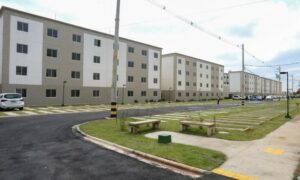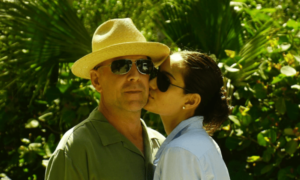Casper Ruud, the 26-year-old Norwegian tennis star, secured a significant victory against former world No. 1 Daniil Medvedev in the quarterfinals of the Madrid Masters 1000, held in Spain’s capital. The match, played on May 1, 2025, ended in straight sets with scores of 6/3 and 7/5, marking Ruud’s first win over Medvedev in their four career encounters. Played on the clay courts of the Caja Mágica, the match showcased Ruud’s prowess on clay, a surface where he has excelled, reaching the Roland Garros finals in 2022 and 2023. This win propels Ruud into the semifinals of the tournament, solidifying his status as a top contender in the 2025 clay season. The victory also boosts the confidence of Ruud, who had faced an inconsistent start to the year but found his rhythm in Madrid.
The clash against Medvedev tested Ruud’s strategic acumen and resilience. Despite a 0-3 head-to-head record against the Russian across grass and hard courts, Ruud leveraged the clay surface, which suits his spin-heavy, consistent playing style. Medvedev, renowned for his dominance on faster surfaces, showed flashes of brilliance but struggled to counter Ruud’s intensity. Madrid’s high-altitude conditions, which speed up the game, played into Ruud’s hands as he delivered deep, powerful shots to unsettle his opponent. Fans at the Manolo Santana Stadium were treated to a high-level display, with both players engaging in intense rallies that underscored their technical abilities.
Now ranked No. 15 in the ATP standings, Ruud awaits the winner of the match between Argentina’s Francisco Cerundolo and 19-year-old Czech rising star Jakub Mensik in the semifinals. His performance in Madrid marks a critical milestone as he aims for his first Masters 1000 title and a spot in the tournament’s final, a stage he last reached in 2021. The win over Medvedev positions Ruud as a favorite for the remainder of the clay season, including upcoming events in Rome and Roland Garros, where his track record suggests he could make a deep run.
- Keys to Ruud’s victory: Strategic use of clay, heavy topspin, and prolonged rallies.
- Medvedev’s challenges: Struggles with consistency on clay despite powerful shots.
- Next challenge: Semifinal matchup against either Cerundolo or Mensik for a final berth.
Ruud’s journey to the quarterfinals
Casper Ruud entered the Madrid Masters 1000 with the goal of rediscovering his top form after a mixed start to the 2025 season. Earlier in the year, he suffered setbacks, including a loss in the Dallas final to Denis Shapovalov and early exits in other tournaments. However, the clay courts, where Ruud thrives, reinvigorated his game. His Madrid campaign began with a confident 6/3, 6/4 win over Frenchman Arthur Rinderknech, allowing him to fine-tune his rhythm in the tournament’s opening round.
In the second round, Ruud faced American Sebastian Korda, the No. 23 seed, and delivered a commanding 6/3, 6/3 performance, showcasing his ability to dictate points with precision. The third round brought a tougher test against world No. 4 Taylor Fritz. In a tightly contested match, Ruud emerged victorious with a 7/5, 6/4 scoreline, proving his mettle against a power hitter. These wins set the stage for the showdown with Medvedev, his toughest opponent in the tournament thus far. Ruud’s progression in Madrid reinforces his reputation as a clay-court specialist, a surface that demands endurance, patience, and tactical finesse.
Ruud’s experience in high-stakes tournaments has been evident throughout his Madrid run. With 13 Masters 1000 quarterfinals in his career, he is no stranger to the pressures of elite competition. His 2021 Madrid semifinal appearance, where he fell to Matteo Berrettini, remains a benchmark for his current campaign. Now, with greater maturity, Ruud is poised to surpass that milestone and vie for the title, which would be the most significant of his career. The victory over Medvedev underscores his growth, but he remains focused on the challenges ahead.
Tactics behind Ruud’s victory
Casper Ruud’s triumph over Daniil Medvedev was the result of a meticulously executed game plan tailored to the clay surface. Ruud capitalized on his forehand, delivering heavy topspin shots that pushed Medvedev deep behind the baseline, limiting the Russian’s ability to counterattack. He also varied his pace, mixing high, looping balls with sharper, aggressive strikes to disrupt Medvedev’s rhythm. Madrid’s altitude, which accelerates ball speed, amplified the effectiveness of Ruud’s deep groundstrokes, giving Medvedev less time to react.
Ruud’s composure in critical moments was another deciding factor. In the first set, he secured an early break of serve and maintained his lead to close it out 6/3. The second set proved more competitive, with Medvedev raising his level and challenging Ruud’s serve. Yet, Ruud stayed calm and capitalized on a crucial opportunity in the 12th game to break Medvedev’s serve and seal the 7/5 victory. His ability to remain steady under pressure was particularly notable given his prior losses to Medvedev, who had dominated their encounters on grass and hard courts.
Ruud’s serving was a subtle but effective weapon. While not known for frequent aces, he achieved a high first-serve percentage, allowing him to start points on his terms. His defensive skills, paired with timely transitions to offense, neutralized Medvedev’s power, forcing the Russian into errors. The win highlights Ruud’s ongoing efforts to refine his game, particularly in terms of aggression and tactical versatility, which have been focal points in his 2025 preparations.
- Ruud’s tactics: Heavy topspin forehand, pace variation, and clutch performance in key moments.
- Medvedev’s struggles: Defensive positioning and adaptation to clay conditions.
- Altitude advantage: Faster conditions in Madrid enhanced Ruud’s deep shots.
Medvedev’s performance in Madrid
Daniil Medvedev, currently ranked No. 10, arrived in Madrid aiming to improve his clay-court record, a surface that has historically posed challenges for his flat-hitting, counterpunching style. After a rocky start to 2025, with early exits in events like the Australian Open, Medvedev showed promise in Madrid. His campaign began with an easy win, as Serbia’s Laslo Djere retired during their first-round match. In the second round, Medvedev dispatched Argentina’s Juan Manuel Cerundolo 6/2, 6/2, demonstrating his ability to overpower less experienced opponents.
The third round presented a sterner test against American Brandon Nakashima. Medvedev dropped the first set 3/6 but rallied to win 6/1, 6/4, showcasing his resilience. However, against Ruud, he faced a player better suited to clay and with a superior tactical approach. Despite moments of brilliance, including powerful winners and impressive defensive play, Medvedev lacked the consistency needed to turn the match around. His exit in the quarterfinals mirrors his performance in Madrid the previous year, where he also reached this stage but failed to advance.
Medvedev’s clay season now shifts to the Rome Masters 1000, where he won his lone clay title in 2023. His Madrid experience, while not culminating in a championship, provides valuable preparation for Rome and Roland Garros, where he aims to improve his record. The loss to Ruud underscores the need for tactical adjustments on clay, particularly in terms of patience and adaptability. Still, Medvedev remains a formidable force in the ATP, with the potential to rebound in the coming weeks.
Context of the 2025 Madrid Masters 1000
The Madrid Masters 1000 is one of the ATP’s premier events, held annually at the Caja Mágica, a state-of-the-art facility with both covered and open clay courts. Running from April 22 to May 4, 2025, the tournament attracts the world’s top players in both men’s and women’s draws. Madrid’s unique conditions, driven by its 600-meter altitude, make the game faster than in other clay events like Monte Carlo or Rome, creating dynamic and unpredictable matches.
Beyond Ruud’s standout performance, the 2025 men’s tournament has seen other notable results. Argentina’s Francisco Cerundolo upset world No. 2 Alexander Zverev in the round of 16, while Czech teenager Jakub Mensik continues to impress after winning in Miami earlier this year. Other quarterfinal matchups include Britain’s Jack Draper versus Matteo Arnaldi and Italy’s Lorenzo Musetti against Canada’s Gabriel Diallo. The early exits of Novak Djokovic and Carlos Alcaraz have opened the door for new contenders, making this one of the most open Madrid tournaments in recent memory.
In the women’s draw, stars like Iga Swiatek and Coco Gauff are advancing to the semifinals, adding to the event’s competitive intensity. The total prize money for the men’s tournament is €8,055,385, with the champion earning €985,030 and 1,000 ranking points. As a key stop on the road to Roland Garros, which begins in late May, Madrid is a critical proving ground for players like Ruud aiming to peak on clay.

Casper Ruud, the 26-year-old Norwegian tennis star, secured a significant victory against former world No. 1 Daniil Medvedev in the quarterfinals of the Madrid Masters 1000, held in Spain’s capital. The match, played on May 1, 2025, ended in straight sets with scores of 6/3 and 7/5, marking Ruud’s first win over Medvedev in their four career encounters. Played on the clay courts of the Caja Mágica, the match showcased Ruud’s prowess on clay, a surface where he has excelled, reaching the Roland Garros finals in 2022 and 2023. This win propels Ruud into the semifinals of the tournament, solidifying his status as a top contender in the 2025 clay season. The victory also boosts the confidence of Ruud, who had faced an inconsistent start to the year but found his rhythm in Madrid.
The clash against Medvedev tested Ruud’s strategic acumen and resilience. Despite a 0-3 head-to-head record against the Russian across grass and hard courts, Ruud leveraged the clay surface, which suits his spin-heavy, consistent playing style. Medvedev, renowned for his dominance on faster surfaces, showed flashes of brilliance but struggled to counter Ruud’s intensity. Madrid’s high-altitude conditions, which speed up the game, played into Ruud’s hands as he delivered deep, powerful shots to unsettle his opponent. Fans at the Manolo Santana Stadium were treated to a high-level display, with both players engaging in intense rallies that underscored their technical abilities.
Now ranked No. 15 in the ATP standings, Ruud awaits the winner of the match between Argentina’s Francisco Cerundolo and 19-year-old Czech rising star Jakub Mensik in the semifinals. His performance in Madrid marks a critical milestone as he aims for his first Masters 1000 title and a spot in the tournament’s final, a stage he last reached in 2021. The win over Medvedev positions Ruud as a favorite for the remainder of the clay season, including upcoming events in Rome and Roland Garros, where his track record suggests he could make a deep run.
- Keys to Ruud’s victory: Strategic use of clay, heavy topspin, and prolonged rallies.
- Medvedev’s challenges: Struggles with consistency on clay despite powerful shots.
- Next challenge: Semifinal matchup against either Cerundolo or Mensik for a final berth.
Ruud’s journey to the quarterfinals
Casper Ruud entered the Madrid Masters 1000 with the goal of rediscovering his top form after a mixed start to the 2025 season. Earlier in the year, he suffered setbacks, including a loss in the Dallas final to Denis Shapovalov and early exits in other tournaments. However, the clay courts, where Ruud thrives, reinvigorated his game. His Madrid campaign began with a confident 6/3, 6/4 win over Frenchman Arthur Rinderknech, allowing him to fine-tune his rhythm in the tournament’s opening round.
In the second round, Ruud faced American Sebastian Korda, the No. 23 seed, and delivered a commanding 6/3, 6/3 performance, showcasing his ability to dictate points with precision. The third round brought a tougher test against world No. 4 Taylor Fritz. In a tightly contested match, Ruud emerged victorious with a 7/5, 6/4 scoreline, proving his mettle against a power hitter. These wins set the stage for the showdown with Medvedev, his toughest opponent in the tournament thus far. Ruud’s progression in Madrid reinforces his reputation as a clay-court specialist, a surface that demands endurance, patience, and tactical finesse.
Ruud’s experience in high-stakes tournaments has been evident throughout his Madrid run. With 13 Masters 1000 quarterfinals in his career, he is no stranger to the pressures of elite competition. His 2021 Madrid semifinal appearance, where he fell to Matteo Berrettini, remains a benchmark for his current campaign. Now, with greater maturity, Ruud is poised to surpass that milestone and vie for the title, which would be the most significant of his career. The victory over Medvedev underscores his growth, but he remains focused on the challenges ahead.
Tactics behind Ruud’s victory
Casper Ruud’s triumph over Daniil Medvedev was the result of a meticulously executed game plan tailored to the clay surface. Ruud capitalized on his forehand, delivering heavy topspin shots that pushed Medvedev deep behind the baseline, limiting the Russian’s ability to counterattack. He also varied his pace, mixing high, looping balls with sharper, aggressive strikes to disrupt Medvedev’s rhythm. Madrid’s altitude, which accelerates ball speed, amplified the effectiveness of Ruud’s deep groundstrokes, giving Medvedev less time to react.
Ruud’s composure in critical moments was another deciding factor. In the first set, he secured an early break of serve and maintained his lead to close it out 6/3. The second set proved more competitive, with Medvedev raising his level and challenging Ruud’s serve. Yet, Ruud stayed calm and capitalized on a crucial opportunity in the 12th game to break Medvedev’s serve and seal the 7/5 victory. His ability to remain steady under pressure was particularly notable given his prior losses to Medvedev, who had dominated their encounters on grass and hard courts.
Ruud’s serving was a subtle but effective weapon. While not known for frequent aces, he achieved a high first-serve percentage, allowing him to start points on his terms. His defensive skills, paired with timely transitions to offense, neutralized Medvedev’s power, forcing the Russian into errors. The win highlights Ruud’s ongoing efforts to refine his game, particularly in terms of aggression and tactical versatility, which have been focal points in his 2025 preparations.
- Ruud’s tactics: Heavy topspin forehand, pace variation, and clutch performance in key moments.
- Medvedev’s struggles: Defensive positioning and adaptation to clay conditions.
- Altitude advantage: Faster conditions in Madrid enhanced Ruud’s deep shots.
Medvedev’s performance in Madrid
Daniil Medvedev, currently ranked No. 10, arrived in Madrid aiming to improve his clay-court record, a surface that has historically posed challenges for his flat-hitting, counterpunching style. After a rocky start to 2025, with early exits in events like the Australian Open, Medvedev showed promise in Madrid. His campaign began with an easy win, as Serbia’s Laslo Djere retired during their first-round match. In the second round, Medvedev dispatched Argentina’s Juan Manuel Cerundolo 6/2, 6/2, demonstrating his ability to overpower less experienced opponents.
The third round presented a sterner test against American Brandon Nakashima. Medvedev dropped the first set 3/6 but rallied to win 6/1, 6/4, showcasing his resilience. However, against Ruud, he faced a player better suited to clay and with a superior tactical approach. Despite moments of brilliance, including powerful winners and impressive defensive play, Medvedev lacked the consistency needed to turn the match around. His exit in the quarterfinals mirrors his performance in Madrid the previous year, where he also reached this stage but failed to advance.
Medvedev’s clay season now shifts to the Rome Masters 1000, where he won his lone clay title in 2023. His Madrid experience, while not culminating in a championship, provides valuable preparation for Rome and Roland Garros, where he aims to improve his record. The loss to Ruud underscores the need for tactical adjustments on clay, particularly in terms of patience and adaptability. Still, Medvedev remains a formidable force in the ATP, with the potential to rebound in the coming weeks.
Context of the 2025 Madrid Masters 1000
The Madrid Masters 1000 is one of the ATP’s premier events, held annually at the Caja Mágica, a state-of-the-art facility with both covered and open clay courts. Running from April 22 to May 4, 2025, the tournament attracts the world’s top players in both men’s and women’s draws. Madrid’s unique conditions, driven by its 600-meter altitude, make the game faster than in other clay events like Monte Carlo or Rome, creating dynamic and unpredictable matches.
Beyond Ruud’s standout performance, the 2025 men’s tournament has seen other notable results. Argentina’s Francisco Cerundolo upset world No. 2 Alexander Zverev in the round of 16, while Czech teenager Jakub Mensik continues to impress after winning in Miami earlier this year. Other quarterfinal matchups include Britain’s Jack Draper versus Matteo Arnaldi and Italy’s Lorenzo Musetti against Canada’s Gabriel Diallo. The early exits of Novak Djokovic and Carlos Alcaraz have opened the door for new contenders, making this one of the most open Madrid tournaments in recent memory.
In the women’s draw, stars like Iga Swiatek and Coco Gauff are advancing to the semifinals, adding to the event’s competitive intensity. The total prize money for the men’s tournament is €8,055,385, with the champion earning €985,030 and 1,000 ranking points. As a key stop on the road to Roland Garros, which begins in late May, Madrid is a critical proving ground for players like Ruud aiming to peak on clay.







